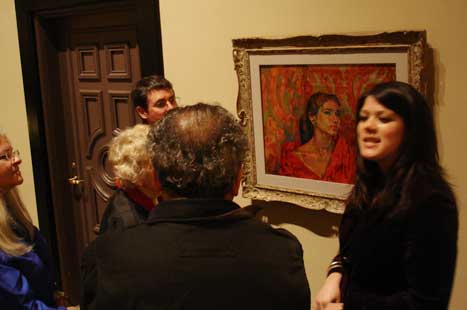Portrait of Maria Callas by Henry Koerner
In a postwar opera world that needed stars, Maria Callas was said to have “restored the ancient luster to the title of prima donna.” Born in New York and raised in Greece, Callas, by sheer force of personality and artistry, rejuvenated the public's interest in this classic music genre.
She created renewed interest in the bel canto works of Bellini and Donizetti, and influenced the next generation of singers such as Beverly Sills, Joan Sutherland, and Marilyn Horne. Part of Callas’s cachet was her volcanic temperament—“I will always be as difficult as necessary to achieve the best”— which ultimately found her fired from the Metropolitan Opera and ostracized by the Chicago Lyric, among other companies. Her box-office quotient was so high, however, that most eventually welcomed her back.
The National Portrait Gallery’s Lauren Johnson recently discussed this 1956 portrait of Callas by Henry Koerner at a Face-to-Face portrait talk. The work is displayed on the museum’s third-floor mezzanine, in the exhibition “Bravo!”
Listen to Lauren Johnson's Face-to-Face talk on Maria Callas (31:05)
Face-to-Face occurs every Thursday evening at the National Portrait Gallery. The next Face-to-Face talk is this Thursday, February 19, when Historian Jim Barber speaks about Thelonious Monk. The talk runs from 6:00 to 6:30 p.m. Visitors meet the presenter in the museum’s F Street lobby and then walk to the appropriate gallery.
Maria Callas / Henry Koerner, 1956 / National Portrait Gallery, Smithsonian Institution; gift of Time magazine / Frame conserved with funds from the Smithsonian Women's Committee
